Fertilizing for Spring Grass
09 March, 2011 - 06:54
Yesterday we had a strong probability of rain. Our weather has been upside down and we are once again experiencing drought conditions. In the fall we planted 70 acres of rye grass, vetch and crimson clover. It survived the fall and has hung in all winter, just now starting to grown enough for the cattle to eat. Normally it would have grown a lot in the fall and stopped in mid December through mid-February, then resumes growth. This past year it was so dry it just survived.
We ordered enough fertilizer for 50 acres. The other 20 are very short with cattle on them already, so deferred for now to fertilize them. Nitrogen prices are through the roof again and headed up. The nitrogen price index is linked to the price of oil/natural gas.
When we distribute nitrogen we also want to improve the minerals on our land. This time we added KMag which is a natural blend of minerals mined in New Mexico. The micro nutrients of sulphur, potash and magnesium will really stimulate root growth.
The blend we used distributed a total of 195 pounds of nitrogen/KMag per acre. After last nights rain, and a warmer temperature, we will immediately get a growth spurt. Our plan is to put our young steers and heifers on 30 acres, and our mature cows that have been breed on part of the other area. In a month we need to get all the cattle off our hay meadows so we can make hay for next winter.
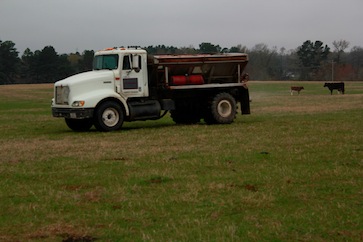
Distributing the fertilizer
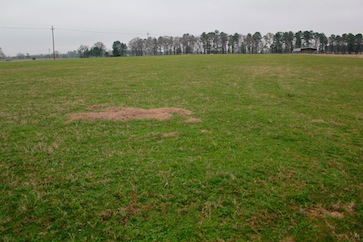
Field with short forage after cattle just removed this week
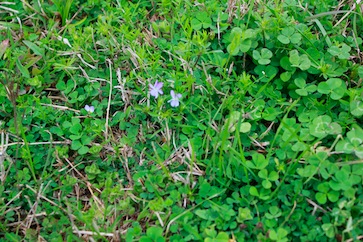
Rye grass, crimson and ball clover and vetch
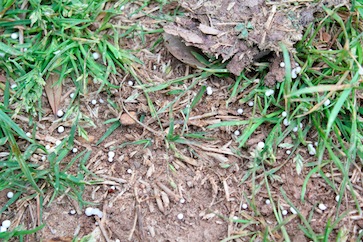
The fertilizer is equally distributed. It does not take much.
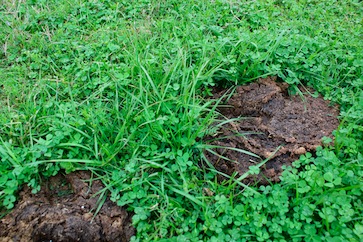
Where cow manure is present it creates an area of natural fertilizer growing forage more rapidly.
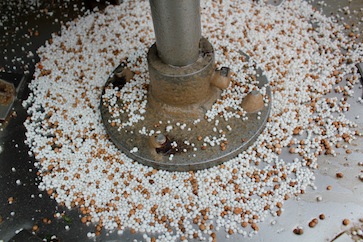
On the spinning disc the nitrogen is white and KMag is brown
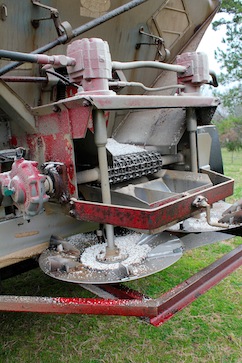
The rear of the distribution truck has an elaborate mechanism that distributes exacts amount of fertilizer.
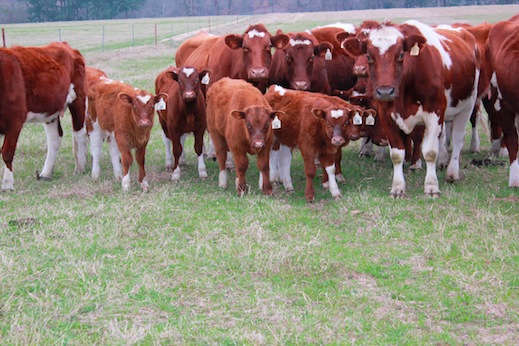
This set of cows and their calves were curious about the activity that disrupted their routine.
They are unaware that in a few weeks this will give them a lot more grass to graze on.
We ordered enough fertilizer for 50 acres. The other 20 are very short with cattle on them already, so deferred for now to fertilize them. Nitrogen prices are through the roof again and headed up. The nitrogen price index is linked to the price of oil/natural gas.
When we distribute nitrogen we also want to improve the minerals on our land. This time we added KMag which is a natural blend of minerals mined in New Mexico. The micro nutrients of sulphur, potash and magnesium will really stimulate root growth.
The blend we used distributed a total of 195 pounds of nitrogen/KMag per acre. After last nights rain, and a warmer temperature, we will immediately get a growth spurt. Our plan is to put our young steers and heifers on 30 acres, and our mature cows that have been breed on part of the other area. In a month we need to get all the cattle off our hay meadows so we can make hay for next winter.

Distributing the fertilizer

Field with short forage after cattle just removed this week

Rye grass, crimson and ball clover and vetch

The fertilizer is equally distributed. It does not take much.

Where cow manure is present it creates an area of natural fertilizer growing forage more rapidly.

On the spinning disc the nitrogen is white and KMag is brown

The rear of the distribution truck has an elaborate mechanism that distributes exacts amount of fertilizer.

This set of cows and their calves were curious about the activity that disrupted their routine.
They are unaware that in a few weeks this will give them a lot more grass to graze on.
